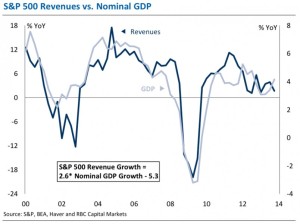It was just last week that Apple came to market with a $12 billion bond deal, presumably to fund its share repurchase program. The market (as readers may recall) breathed a sigh of relief that the deal was significantly smaller than the $20+ billion that had been speculated.
And now, just a few days later, Apple is again in the news, this time on speculation that it will be paying $3.2 billion for Beats Electronics LLC, the maker of expensive, hip headphones and sponsor of a new streaming music station. We will leave it to the equity analysts to decipher whether this is a good deal for shareholders. We are trying to sort out whether it means anything for bondholders. The short is answer is: probably not. For a company with $150 billion in cash, a $3 billion deal is simply not large enough or transformative enough for it to have any impact whatsoever on credit quality. Credit spreads haven’t budged (one way or another) on the news. Even the 10 year from last week, which we noted was the weakest performer, is trading about 2 basis points tighter than new issue.
The potential transaction does underscore the danger of owning bonds of high quality issuers. There is an enormous range of potential outcomes, a whole host of nasty things that Companies can do with their cash. So which poison would we pick? Acquisitions are generally scarier – they can dramatically and suddenly alter a company’s risk profile. But share buybacks can result in death by a thousand cuts. As we move through the credit cycle, anemic growth and deteriorating margins tends to drive managers increasingly into the realm of financial engineering. Credit risk’s single tail becomes ever longer.
But for the past week, there was little sign of heightened risk. Or return, for that matter. Corporate bonds generated total returns for the weak of -0.06%, and excess returns were about the same. The new issue calendar was very average – about $22 billion of deals, and no big blockbusters this week. JP Morgan brought $2 billion of a new 10 year bond, which priced at +100, and did not really perform. Caterpillar Inc. came with $2 billion, with 10 year, 30 year, and a 50 year. The 50 year is not a typical maturity, and we think the pricing was very attractive – bonds traded 11 basis points tighter in the secondary. Next week looks like it will be more of the same – spreads continuing at tight levels, an average calendar of $20 billion….
….and the beat goes on…..






